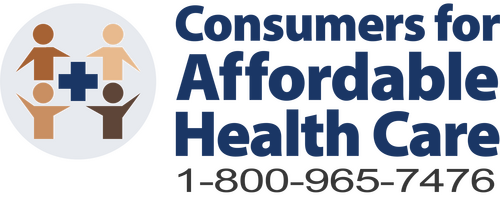Health insurance terms can be confusing, but learning what they mean is the key to making the most of your coverage, understanding medical bills, and communicating with your provider. The list below defines many common health insurance terms, but not all of them! You can find more definitions in this presentation or watch this video to keep building your health insurance vocabulary. Still have questions? Call our free HelpLine at 1-800-965-7476.
Glossary of Common Health Insurance Terms:
- Certificate of Coverage: This booklet is the contract between you and the insurance company. It has detailed information about the benefits covered by the plan. It is important to fully understand this information when evaluating whether the policy covers the health care services you need. This may also be called the Summary Plan Document.
- Claims: When you or your doctor request payment of benefits from your insurance plan after you’ve received treatment or services (reimbursement) or before you receive treatment (prior authorization).
- Coinsurance: Amount or percent that you have to pay for most medical care even after you meet your deductible. For example, some insurance companies pay 80% of the claim so your coinsurance or bill would be 20%.
- Copayment (or co-pay): A flat fee paid directly to the provider when you receive a medical service (for example, $10 for every visit to the doctor).
- Covered Benefits: A list of what services are covered by the plan. It can be short or long, depending on the plan. This section will also give more detail about what and how things are covered. Most plans agree to cover any “medically necessary” treatment in various categories of services, including hospital care, preventive care, prescription drugs, maternity, cancer treatment, etc. State law governs the definition of “medical necessity” but it can be difficult to understand what is covered just by reading the policy.
- Cost-sharing: In addition to the premium, this is the amount you pay to cover the costs of a covered health care service. It includes the deductible, co-payments, and coinsurance amounts.
- Deductible: The amount of money you must spend each year on your medical care expenses before your insurance policy starts paying. Some services, like preventive services, may be covered immediately even if you have not met your yearly deductible.
- Denial: A “denial” means that the insurance company has decided not to pay for the procedure that your doctor has recommended. The company may say the procedure is not “medically necessary” and deny the claim. In other cases, the procedure is not covered by the plan or the person may not be eligible for the plan or certain benefits as detailed in the policy.
- Eligibility: The section in the Certificate of Coverage that tells when coverage starts.
- Essential Health Benefits: A set of health care service categories that must be covered by certain plans, since 2014. Essential health benefits for Qualified Health Plans must include items and services within at least the following 10 categories: ambulatory patient services; emergency services; hospitalization; maternity and newborn care; mental health and substance use disorder services, including behavioral health treatment; prescription drugs; rehabilitative and habilitative services and devices; laboratory services; preventive and wellness services and chronic disease management; and pediatric services, including oral and vision care.
- Exclusions and Limitations: This lists the services and procedures that the plan will not cover, such as experimental treatment or cosmetic surgery. It also lists items that have special limits on coverage, such as mental health care, convalescent home care, or treatment for conditions that existed when coverage started, known as pre-existing conditions.
- Explanation of Benefits (EOB): This is a document the carrier sends you after you have utilized health care services. It will tell you for each kind of care you received (examination, imaging, lab work, etc.), how much the insurance company agreed to pay and how much you need to pay. Depending on your carrier an EOB might be called a "Health Care Summary", "Summary of Payment", or "Activity Summary". If they did not pay a claim you think they should have, you can appeal that denial of payment.
- External Appeal (External Review): In certain cases, after you exhaust the internal appeals process with your insurance company, you can request an external review with an independent review organization (IRO). You do this through the Maine Bureau of Insurance. You have 12 months to apply for an external review after an internal appeal is denied. Contact the Bureau directly (1-800-300-5000) to request an external review at no cost to you. They will assign your case to an IRO who will conduct a hearing before issuing a decision.
- Health Maintenance Organization or HMO: A type of health carrier that requires members to get all their care from a specific group of providers. The plan may require the member’s primary care doctor to provide them with a referral before they see a specialist or go to the hospital.
- Health Reimbursement Account (HRA): a savings account that can be used to cover many health costs including insurance premiums which works with many types of insurance policies. Deposits can be made only by employers but account funds are owned by the employee and can be carried over to subsequent years if not used up.
- Health Savings Account (HSA): a savings account that can be used to cover many health costs, but not insurance premiums. Works only with high deductible plans (deductibles over $1000 per person). Deposits can be made by employers, employees and individuals. Both deposits and withdrawals are tax-free.
- High Deductible or Catastrophic Plans: may have relatively lower monthly premiums but limited coverage, with deductibles in the $5000 to $15, 000 range each year per person. This means coverage doesn’t start until the insured’s bills reach the deductible amount. Some people have these plans because they consider them to be “asset protection” (in event of a catastrophe, the plan will save their home from creditors) but it is entirely possible in many cases, the insured person will not be able to get services without having the deductible amount on hand. Some high deductible plans also have limited coverage even after the deductible is met.
- In-Network or Out-of-Network: In-network providers contract with the health insurance company to provide services to plan members for specific pre-negotiated rates. Out-of-network providers have not contracted with the health insurance plan. You’ll probably pay less if you visit a provider in network than out-of-network. (Note: may also be called “Preferred” or “Participating” provider network.)
- Insured: the person(s) covered by the health insurance policy.
- Internal Appeal: Most health plans have a process that lets you appeal its decision to deny a claim or limit benefits within the plan through an “internal appeal”. If you wish to file an internal appeal, you must do so within 180 days. Maine law requires insurance plans to offer two internal appeals. You may file an internal appeal in writing or by phone. Depending on the type of policy, you may have one or two opportunities to file an internal appeal (referred to as level 1 and level 2 internal appeals).
- Maximum Out-of-Pocket: Also called Out-of-Pocket limit, a predetermined, limited amount of money you have to pay each year for deductibles and coinsurance. The amount is set by the insurance company. Once the maximum out-of-pocket amount is paid, the insurance company will pay the full amount (excepting copays) for all covered services (as long as you pay the premium). The ACA has limited these amounts for all Marketplace plans.
- Point of Service or POS: these less common plans have a network that is a combination of HMO and PPO which requires members to choose a Primary Care Provider from within the plan’s network. If a member gets care out-of-network, the plan benefits and compensation are at a lower level, and you need to file the claim yourself to get reimbursed.
- Pre-athorization: A decision by your health insurer or plan that a health care service, treatment plan, prescription drug or durable medical equipment is medically necessary. Sometimes called prior authorization, prior approval or pre-certification. Your health insurance or plan may require pre-authorization for certain services before you receive them, except in an emergency. Pre-authorization isn’t a guarantee your health insurance or plan will cover the cost.
- Pre-existing Condition: any health problems that existed before the date the insurance became effective. Prior to the Affordable Care Act, insurance companies didn’t have to cover pre-existing conditions.
- Preferred Provider Organization or PPO: A network of providers work with the health insurance plan. The plan often pays more if members get their care from doctors or hospitals that contract with a PPO and are therefore “in-network”. Members have to pay more if they go to a doctor or hospital not listed in the network, known as “out-of-network”. It costs more than an HMO but has more flexibility. You may not have to select a primary care provider.
- Premium: the monthly amount you, or you and your employer pay for your insurance coverage.
- Schedule of Benefits: This is often found at the front of the policy. It details what the insurance company pays and what the employer and employee pay for different categories of service. It lists such things as deductible, co-insurance, and co-pays required at each doctor’s visit.
- Self-Insured Plan: Also called self-funded. The plan purchaser, the employer, puts all employee premium contributions together and pays claims from that pot of money. The employer bears the risks itself instead of an insurance company. Often found at large employers and government employers.
- Summary of Benefits and Coverage (SBC): health insurance issuers and group health plans are required to provide you with an easy-to-understand summary about a health plan’s benefits and coverage. They are designed to help you better understand and evaluate your health insurance choices. The SBC was designed after the Nutrition Facts label required for packaged foods which helps you make healthy and informed decisions about your diet. The SBC’s standardized and easy to understand information about health plan benefits and coverage allows you to more easily make “apples to apples” comparisons.


